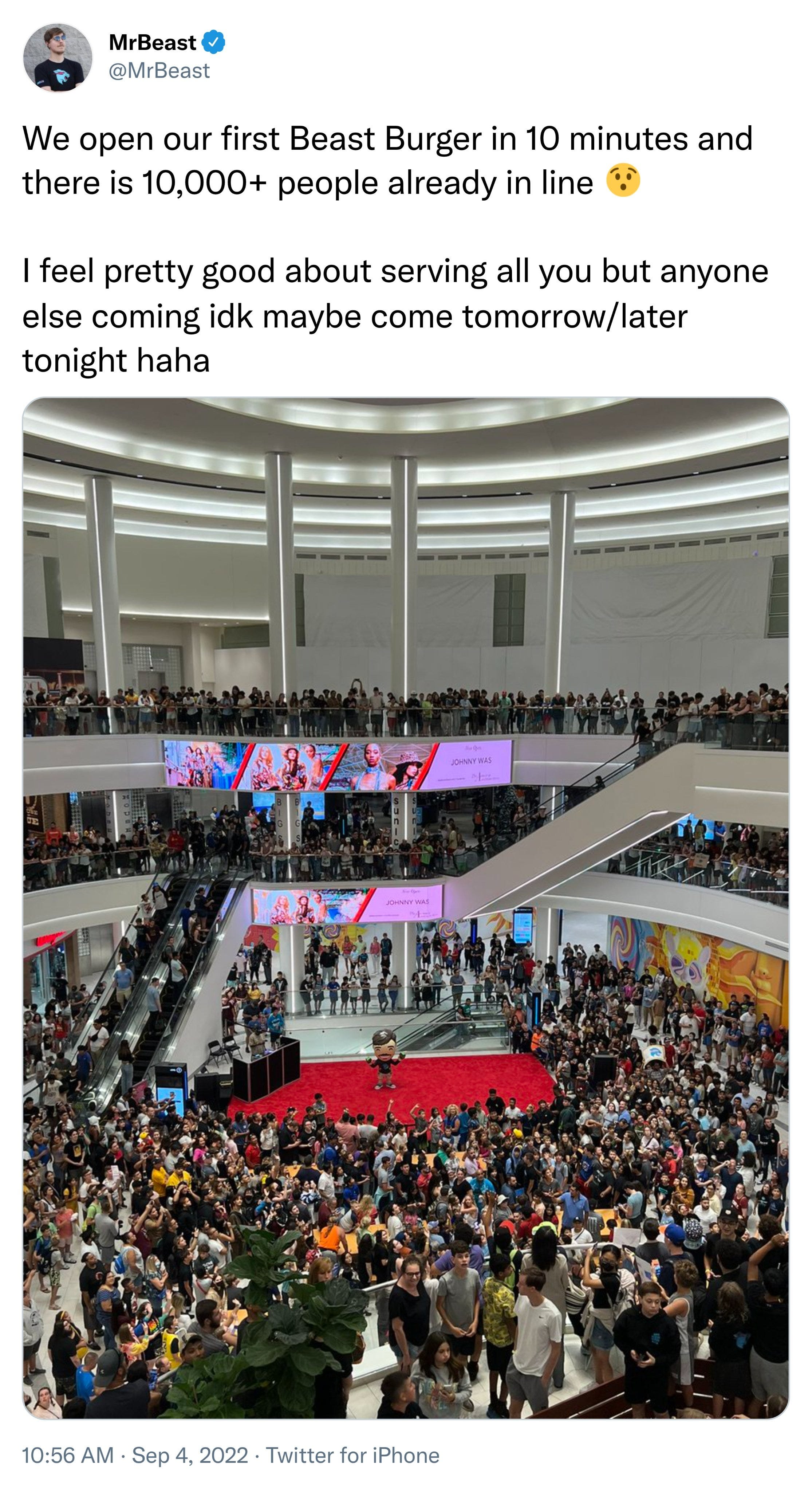A New ESG?
ESG has been important to companies and to investors though recently there has been some blowback from certain segments of the market on whether ESG is a feel-good, hard to measure, share-holder unfriendly and fuzzy goal.
This piece proposes that while ESG remains important a new ESG which is far more focused and therefore measurable, far more aligned with stakeholder value and more resonant with recent challenges needs to be acknowledged.
A new ESG.
What is traditional ESG?
A comprehensive definition from ADEC
Environmental risks created by business activities have actual or potential negative impact on air, land, water, ecosystems, and human health. Company environmental activities considered ESG factors include managing resources and preventing pollution, reducing emissions and climate impact, and executing environmental reporting or disclosure. Environmental positive outcomes include avoiding or minimizing environmental liabilities, lowering costs, and increasing profitability through energy and other efficiencies, and reducing regulatory, litigation and reputational risk.
Social risks refer to the impact that companies can have on society. They are addressed by company social activities such as promoting health and safety, encouraging labor-management relations, protecting human rights and focusing on product integrity. Social positive outcomes include increasing productivity and morale, reducing turnover and absenteeism and improving brand loyalty.
Governance risks concern the way companies are run. It addresses areas such as corporate brand independence and diversity, corporate risk management and excessive executive compensation, through company governance activities such as increasing diversity and accountability of the board, protecting shareholders and their rights, and reporting and disclosing information. Governance positive outcomes include aligning interests of share owners and management and avoiding unpleasant financial surprises.
A New ESG
ESG is and will continue to be important but it covers so many areas that it often feels unfocused and is often a something that has a section in an Annual report, a check box that must be marked and though essential to a healthy business is seen as a “nice to do” or a “we have to do” versus it’s the competitive advantage that will drive increased customer loyalty, enhanced attraction and retention of talent and increased financial value to owners and shareholders.
Today amidst the triple crisis of health, economic and social unrest reflected in Covid-19, generational shifts and Black Lives Matter a more clarified and focused ESG should be Employees, Society and Government.
Every smart company understands that purpose, values, doing good needs a focus on ensuring that their employees are well taken off, the impact of their products and services is a net positive to society and that they work in harmony with Government which is an essential force holding society together and providing resources to its employees.
Employees: Is the company ensuring security for their employees by paying a wage that allows them to have disposable income after they cover living, health and student debt? Are you providing adequate health care and an environment that does not put their physical or mental health at risk? Does the firm have diversity across the company and do people feel safe in speaking up? Are they investing in training? Most importantly are employees a cost or also an asset? Learn more about what PayPal has done in this area.
The most critical asset a company really has is its workforce. Four decades of experience and years of research for my book Restoring the Soul of Business: Staying Human in the Age of Data indicate that its employees who create the brands, the ideas, the experience that make a company and the only way a company improves and transforms itself is by growing the skills and unleashing the talents of its people.
Today employees are more stressed than ever and over the next few years companies will be made or broken based on what they do and did in the early 2020’s. The Great Resignation and “Quiet Quitting” are symptoms where the real questions are why, how, where and who we work for?
Society: We have always lived in a connected world but over the past few years we are more connected than ever due to search that allows us to connect to information, e-commerce that enables us to connect to anywhere to transact, social networks that connect us to each other and mobile phones that connect us all the time. No wonder that the key connecting companies of Google, Amazon, Meta and Apple are four of the most valuable companies in the world.
While many of these were funded by advertising and ran AOS (Advertising Operating Systems) or iOS (Apple) the reality is they are now Society Operating Systems and must manage themselves and be governed as such. But increasingly due to their scale, scope, and balance sheets more and more companies from Walmart to CVS to Starwood’s decisions change society. What are the implications on Society of a firm’s business decisions? Often the secondary effects of optimizing for business creates huge problems for society.
How can a company understand both what the ill effects might be to society but as importantly what good can one do for society as Walmart unleashed its logistics often after a hurricane. Society is often the community that companies are based in, or their employees live and where their customers make their life. Every company has the potential to be a net good to society while also ensuring profitability and growth, but it needs to be baked into its strategy.
A focus on purposeful good for society and multiple stake holders attracts not just customers but talent who feel more connected and prouder of such firms
Government: If there is one thing that Covid-19 and its aftereffects has shown is that government matters. The quality of governance matters. Even the University of Chicago professors worry that government has been captured by business and wonders how to save Capitalism from the Capitalists. Government has been underfunded, demonized, and lobotomized via lobbying and a platoon of politicians who believe they are in the business of entertaining versus running things and solving problems. More government may not be the answer, but better government and a more respected government is usually key for a country’s health.
Businesses must recognize that earning billions and paying peanuts in taxes eventually means no infrastructure, no public schools and much more. Running to government when things get tough but starving them when things go well is not aligned with purpose values and other high thoughts that gallivant and roam free on corporate websites.
So, every corporate leader, HR honcho, purpose driven person in a firm should ask?
Are we looking after our employees?
Are we thinking about society?Particularly the negative impacts of our products and services?
Are we helping government including paying taxes?
The Employee, Society, Government focus will need to be done first to truly realize Environment, Social and Governance goals.
Today more and more customers care a lot about how companies are looking after their employees and caring for society. If one is a senior manager, it is important to spend some time with employees in their 20s and 30s and learn how they truly care about purpose, values, fairness and this impacts their decision to stay or leave your company and much more.
From Patagonia to PayPal companies that do the right thing have the right results.
By focusing on the story of people, society, and culture they deliver the results they need for the spreadsheets.
Identifying, Growing & Recruiting Talent.
Mosaic by Jason Dussault
Today like never before we are living in a world of rapid transformation and change.
New industries rise and fall and the inter-connected unstoppable forces of globalization, demographic change and technology twist and toss all of us.
In this landscape how do we identify the key skills that we will need from talent or hone our own skills?
What will remain relevant and in demand in an age of shorter and shorter half-lives of firms and business models?
And when we recruit talent particularly talent from outside how should we maximize the likelihood of fit and success?
Mosaic by Jason Dussault
The Six C’s
Six key skills will be essential in the future.
Three of these have to do with individual competence (Cognition, Creativity, Curiosity) and three how we connect with each other and the world outside our minds (Collaborate, Communicate, Convince).
Very few people will be world class in all six areas, but we all need to grow to be very good in at least two in each area.
Many companies hire or tolerate unbalanced people who are ultra-strong in individual skills such as cognition and creativity but are terrible at collaborating or communicating and learn that these lop-sided folks almost never ever last.
Being great at collaborating and communicating but being lack luster in cognitive or creative and other skills also flames out as these folks do not earn credibility of insiders or clients. Similarly, brilliance without some basic people and communication skills always ends up poisoning cultures and eventually flaming out because the organization rejects these “smart porcupines”
Mosaic by Jason Dussault
The 3 C’s of Individual Competence
Cognition. Curiosity. Creativity.
Cognition is simply learning to think and keeping your mental operating system constantly upgraded. This requires deliberate practice and sustained work. Improved cognition is achievable.
But one must work at it and many of us are so swamped with keeping up with our daily workload that we do not invest in growing our skills and expertise. This proves to eventually lead to irrelevance as the needs for yesterday’s skill sets erode and one has not replaced them with a new set of skills for the future.
Creativity is connecting dots in new ways, looking beyond the obvious and this skill will be key as AI powered computers, data crunch and co-relate faster than we ever will.
To be human is to be creative.
Creativity is at its heart the way we deal with a world of change by adapting, evolving, and re-inventing.
We need to learn and feed this inside us. The future will be about data driven storytelling and not just data or storytelling and the ability to leverage modern machines and algorithms to unleash connection and meaning will depend on creativity.
Curiosity is simply being alive to possibilities, questioning the status quo and asking what if? Today the key competitor or opportunity in any category comes from outside it.
Curiosity may have killed the cat, but the lack of curiosity killed the careers of many people.
Mosaic by Jason Dussault
The 3C’s of Connecting
Being cognitively gifted, creative, and curious will not be enough since we are living in a connected world where eco-systems, teams and linkages is how ideas are born, value created, and long-term careers forged. For these we need to hone and build and train for three other skills.
Collaborate: Collaboration is key to work in a world where API’s (Application Protocol Interfaces) are not just about handshakes between software/hardware but between individuals with different skills, teams in different countries, partners, suppliers and much more.
Communicate: Learn to write. Learn to speak. Learn to present. It may be so old school but watch the people who succeed, and they are good at communication. And all of these can be taught and learned.
But communication is not a one-way street and as important as it to write, speak and present it is as critical to be able to listen, to hear and to understand what others are saying with an open mind and a sense of empathy.
Convince: Every one of us is a salesperson regardless of what we believe our title is. This is true even if we do not sell anything at work. We must convince colleagues of our points of view.
We all must learn to convince and learn to sell.
Mosaic by Jason Dussault
The 3 I’s of recruiting experienced talent from the outside.
It is rare that a company can avoid hiring significant talent from outside if it is serious about transforming itself to change and grow. New skills, new mindsets and new blood enhances the corporate genetic pool.
But these hires are particularly fraught, and experience indicates that we need to evaluate for the 6c’s but also look for three other critical factors especially when recruiting for senior roles
These are a) Integration, b) Integrity, c) Impact
Integration is about how will the person fit in the culture of the firm.
It requires multiple interviews (Zoom and wherever possible in person) and ideally as many colleagues of the person being recruited should have an opportunity to be exposed to their future colleague. While often this is difficult it truly makes the on boarding and acceptance of the outside individual much easier
Too many companies bring in a wunderkind who either fails to adapt or is chewed up and spit out by the organization. While “Culture” may eat strategy for breakfast it honed its chewing skills by gnawing on the bones of outside talent.
Integrity and the Impact needs to be evaluated over time and require in depth research.
Integrity has never been more important and in today’s correctly sensitized environment this is not just about financial trust but dealings with people of different backgrounds among other things.
Impact on Business can be measured through financial results but as important is how the individual has built teams, grown people, and dealt with long term periods of stress or setback. Be careful of people who switch jobs every 2 or 3 years since it is highly unlikely, they architected the success they may claim.
Ex-bosses and ex-direct reports rather than colleagues and industry experts are usually the ideal people to interrogate since they can provide perspective, put things into context and provide a multi-faceted picture of the person.
In the end every one of us is responsible for our own careers. We should not outsource our future to somebody else. We should evaluate ourselves and our teams on the 6C’s and invest time and learning utilizing both company and external resources to keep honing and up skilling ourselves.
The future will not adapt to us.
We must adapt, grow, and transform ourselves for the future.
Diverse Faces Are Not The Same As Diverse Voices.
All leaders face many challenges today, including organizational designs built for the past vs. the present, hierarchical command-and-control management styles that do not resonate with a new generation and employees who question their intent.
One key change that companies are making to address these issues is to ensure that they have a more diverse work force that will resonate with the marketplace and with their talent.
Ensuring diversity is not just the right thing to do, but is proven to be good for the bottom line as a representative workforce is a competitive advantage when talent is key, change is widespread and new ways of looking at things become critical.
Importance of diversity of voices.
However, ensuring a diversity of faces is a necessary but insufficient step. Not only do companies need different faces around the table, but they also need diversity in thinking. We need to ensure that every person in a firm and around the table has a voice.
Most importantly, it is critical to have voices that can speak truth to power, question the status quo, call out potential issues and be heard without the risk of being punished.
Today some of the issues that need to be discussed including a) how the most successful companies and leaders self-defeat themselves by becoming deaf, dumb and blind to the reality around them, b) how mangers instead of re-inventing how they work and finding ways to maximize the benefits of in person interaction are coercing people back to the office breeding long term disdain and resentment and c) how The Third Connected Age of the Internet driven by AI, 5G, Blockchain, AR/VR requires a top to bottom re-thinking of business models.
There are voices that question and have suggestions on how to solve or mitigate these issues.
If such voices were listened to, many companies, such as Wells Fargo and possibly Boeing, would not have suffered their reputational and market valuation losses. There were people who knew there were issues, but they either kept quiet or were silenced or ignored.
Speaking up. Speaking out.
For true diversity it is key that people can call out the turd on the table when everyone else is celebrating what looks like a delicious brownie.
This is very difficult since the issues being called out are challenging. Financial impropriety. Cutting corners to make deadlines, which hurts product or service quality. Loathsome behavior by management. Incompetence in adapting to change.
In addition to the difficulty of speaking out, there is the risk of job loss, increased workload to fix the problem, career blackballing and, of course, the possibility of being wrong.
But speaking one’s mind is not just important in helping to avoid big problems or issues. It also creates an environment that helps day-to-day business.
Increases effectiveness of teams: The best teams feel connected to each other and feel a sense of empathy and trust. Straight talk helps foster these qualities.
Gets to the root of problems: Continuous improvement is critical in a fast-moving competitive age. This means identifying threats, weaknesses, and issues. These are much easier to do when voices are not stifled.
Fosters creativity and innovation: For great ideas and creativity we need trampolines of trust and an environment where disruptors can disrupt without having their lives and careers disrupted.
How to unleash the voices within.
Speaking up is difficult in all circumstances but particularly if management and the culture is not supportive.
Studying many companies and organizations, including firms as diverse as Pixar and the Navy Seals, has revealed some best practices that one can unleash to encourage diversity of voice.
· Ask everyone to speak, from the most junior to the most senior.
· Celebrate truth-tellers and status quo breakers when they are right with promotions and financial rewards.
· Bring in outside voices to share cases from outside and run workshops.
· After each project ask how things could have been done better.
Management should ask people to build a case for why the decision being taken by management is wrong. A postmortem before the project has begun allows people to say what they need to.
Being sensitive to diversity of voices as much as to diversity of faces will ensure long-term success for companies.
Re-thinking Strategy.
What is strategy?
Strategy is Future Competitive Advantage.
What will the future look like? What will people need and expect? How will demographics, technology and other global shifts create new competitors or recharge current competitors and how will categories blur, blend and maybe even disappear?
Amidst these new expectations and changing competitive dynamics what advantage will your company offer? A differentiated or better product? A competitive moat of network effects, scale or some other dynamic? A better experience? Speed and value?
Very few companies even today get strategy right primarily because they do not understand the exponential impact of technology but also because they make the cardinal mistake of defining their category and competitive set looking backward versus forward.
One example among many is the auto category which defined the key drivers of their category in ways that did not see a Tesla or an Uber for years after they began to scale. How could software be as, if not more, important than hardware? How could electric be better than internal combustion engines? Do most people need the expenses of owning cars or do they just need on demand mobility?
Why the strategy of every organization needs to be re-thought.
If a key to strategy is the future what happens when the contours of the future shift dramatically?
In the past five years things have become far more complicated.
More moving parts, buzzing around at faster speeds in ways that are more interconnected to each other.
Many of the assumptions that underpinned strategy have not only shifted but, in some ways, the exact opposite of what firms believed is coming true.
Here are just a few “beliefs” that now need to be queried:
a) Expanding populations: When calculating “Total addressable market” or “rate of growth” most companies factored in growing populations.
Now the exact reverse is beginning to happen. Populations have started to decline in most advanced economies at a frightening rate.
b) Scale is a competitive advantage: While scale still matters it matters far less than ever before (except for a few businesses where it matters even more) and the very nature of what is scale is changing with many old forms of scale being competitive disadvantages!
c) Capital and talent are in abundant supply: Capital continues to remain in abundant supply but has become a bit more selective, but talent is in such short supply that the greatest ROI for businesses may come from unleashing the untapped capacity of their talent. Return on Human Capital will be a key measure of return joining Return on Capital and other metrics.
Population declines in advanced markets.
It takes 2.1 children per woman to keep the population flat.
That number in most advanced countries is less than 1.7 and declining.
The latest UN projections suggest that the world’s population could grow from 8 billion people to a peak of 10.4 billion before the end of this century. But if we exclude population growth in Africa the population of the world has peaked and, in a few countries, we are starting the great shrinkage.
The Shanghai Academy of Social Sciences team predicts an annual average decline of 1.1% beginning in 2021 pushing China’s population down to 587 million in 2100, less than half of what it is today.
Every business should interrogate their strategy to ask two questions a) how will our plans be impacted in our key markets with declining populations and b) what is our plan for the continent of Africa which will contain more 40 percent of the global population in 2100?
Scale may no longer be the competitive advantage we think.
One of the long-standing tenets of business are the advantages of scale.
Scale has provided companies with many benefits from higher margins due to lower costs, to insulation from competition due to moats of marketing spending and widespread distribution.
Over the past decade however the benefits of scale have diminished and in some cases are proving to be a disadvantage:
Scale of Distribution: With direct-to-consumer marketing enabled by the Internet and platforms like Shopify, widespread retail distribution is no longer as effective an advantage. Clearly distribution matters but there are ways to route around the big stores by going direct and creating demand that forces buyers to stock your product.
Scale of Communication: New media behaviors by people particularly search and social are leading to communication channels where spending power is no longer a competitive edge as it was in television or print where marketers cornered key inventory at advantageous prices. Platforms like Facebook enable millions of small businesses with personalization and targeting capabilities to discover customers and be discovered. As content supported by advertising declines to less than a third from nearly two thirds (scale of spending while still being important is losing its potency.
Scale of Manufacturing: The “Everything as a service” platforms from Amazon Web Services to Foxconn allow smaller companies to gain the edges of scaled manufacturing, distribution, and technology without any of the legacy disadvantages of size.
Scale of People: From IBM to GE to Unilever to Walmart there are hundreds of thousands of employees and therefore ability to recruit and grow a range of talent and offer career advancement. Scale of people continue to be important to execute complex and large tasks but there are also new ways to re-aggregate talent. And a generation of talent wants to work in smaller and more entrepreneurial environments. In the post Covid world as we move to unbundled workplaces there will be far more ways to build teams both globally and in real time than ever before.
Legacy scale still matters in most industries and is critical in quite a few like semi-conductors. In fabricating advanced chips, a new fabrication plant can cost over 4 billion dollars and there is no way around scale. Today TSMC (Taiwan Semiconductor Manufacturing Company) dominates due to its scale.
However, while we can never underestimate legacy scale, there are new forms of scale that every smart company recognizes and is expanding into.
Here is the gentleman with the greatest following on You-Tube who launched the first of a chain of pop-up burger restaurants last Sunday.
The New Scale.
Scale of Data: Increasingly companies are realizing that collecting, refining, and leveraging data is what is driving the modern fast growing and highly valued companies from Amazon to Google to Uber. Data enables a new form of scale which is that of mass personalization.
Scale of Networks: On the Internet network effects play a dominant role in creating winners. Dominant platforms such as TikTok, Facebook, Netflix, and Tencent (WeChat) enjoy flywheel effects of more users attracting more users and therefore marketers and businesses.
Scale of Influence: Today individuals have tens of millions of Instagram followers or leverage Twitter and TikTok to reach hundreds of millions of people with single posts and tweets. If you look at scaled entities on social media, they are individuals. People are seen as authentic and certain folks like Elon Musk can move markets.
Scale of Talent and Ideas: One of the lessons of history is that every advance in technology places a premium on superior talent. Technology is a lever and when married with great talent a company enjoy major scale effects.
A vivid example of how the new scale works is Kylie Cosmetics. Kylie cosmetics was launched by Kylie Jenner to sell lipstick. In less than two years Kylie Cosmetics sold 900 million dollars of product making the 21-year-old the fast billionaire ever. Kylie cosmetics had less than 50 full time employees, outsourced manufacturing to Seed Beauty a contract manufacture and all e-commerce and fulfillment to Shopify. The single media channel besides PR that Kylie Cosmetics used was Kylie Jenner’s Instagram account with 120 million followers+ (more than the ratings of the top 10 prime time television shows combined)
And even new scale can be disrupted as TikTok’s focus on video and entertainment and a new algorithm allowed them to overtake Meta indicating that Meta’s multi-billion-person social graph which married great data and network effects of new scale could not stop a juggernaut from rising in less than five years!
One of the areas every leader should study is where the Internet is heading. Web 3, Metaverses, Tokens/Wallets and DAO’s have many challenges and noise around them but they are truly revolutionary and will accelerate power to talent and individuals in exponential ways.
Ideas and talent are the true moats everything else can be bought pennies on the dollar.
The scarcity of talent.
Talent is all. Talent is in short supply. Talent needs to be paid attention to if any strategy is going to work in the future.
The charts above which are for the United States indicate the scale of the challenge anyone hiring talent in the US will face as populations age, immigration stalls while the number of jobs grow.
Add to that the reality that over a quarter of people have moved hundreds of miles from their original office, many people have side-gigs and have begun portfolio careers and that one can work for a spectrum of global companies from anywhere where one has a good Internet connection!
Growing, leading, attracting, retaining, and investing in talent is going to be a key strategic advantage.
Every human and individual and employee with the right support and placement can be highly productive and valuable.
Every strategy deck should have a significant section on unleashing talent and not of competitive dynamics, financial metrics and total addressable market and other data.
Companies grow when talent grows.
Next time you here about a company changing their CEO no matter what they say what is really happening is one or more of the following:
a) They have over invested in China or have overestimated growth in and therefore the total addressable market in the US, Europe, Korea, and Japan.
b) They have over built particularly too many stores or too many theaters or just too many thinking they could crowd out competitors. Now they have a sea of sameness that looks dated and is a legacy cost versus an asset.
c) Their leadership has a talent problem or there has been a break down in the social contract between the people who do the work and are on the frontlines and management.
Architecting Joy.
A definition of success is the freedom to spend time in ways that gives one joy.
Joy is more than happiness which is often transitory as it ebbs and flows with external events.
Joy is more akin to contentment and satisfaction.
Some believe it is momentary suggesting we have “flashes of joy”.
The joy that comes with deep satisfaction and contentment however endures and its contours do not waver with the oscillations of the transient.
Experience, time, and observation reveals there are ways to architect joy.
Joy=Grace+Flow+Connection.
Joy encompasses grace, flow, and connection.
The joyous exhibit graciousness, they tend to be in a state of flow and connected to both reality, other people, and some things higher and deeper.
Grace.
Grace is a fusion of demeanor and deportment.
The graceful combine a generosity of spirit, a sense of respect for others and a humility regardless of their level of excellence and skill.
Generosity of spirit in understanding that much of what is meaningful is not a zero-sum game.
Respecting others by being aware of them and their needs and backgrounds.
Humble in not losing one’s sense of perspective that everybody’s achievement while significant is due to a combination of many factors including luck, opportunity, inheritance, and the specific time and not just due to skill and hard work.
Flow.
When in a state of flow an individual is inside and outside time.
Deeply immersed in something while extracted from the ordinary.
It can come in many ways including working on something which is challenging to stretch one but not so difficult that one cannot achieve positive outcomes.
It can come from being immersed in making things, building things, and creating things.
And it comes from learning and seeking wisdom. In being able to connect the dots and see and understand things in ways that give one joy.
Connection.
The joyous seem to have strong relationships to other people and to a higher cause or purpose.
Humans are social beings and most need some form of connection. The ability to invest and grow connections tends to be associated with joy.
In addition to these human/family connections many gain joy by connecting to a higher cause or purpose.
It may be a charity, it may be a social cause, a striving quest, or some form of a religious or spiritual endeavor.
The stones used to architect joy.
Generosity. Respect. Humility engender Grace.
Creating, Learning, Challenges enable Flow.
Relationships. Purpose. Spirituality elicit Connection.
Intriguingly these are human and not specific to an industry, a race or country.
They sometimes result in fame, power, and money but they can thrive in the absence of these.
Try to create and build and learn. Invest in relationships and respect others without being full of oneself. Find a cause or calling.
By mindfully focusing on and spending one’s time in these ways this one can architect joy.
































